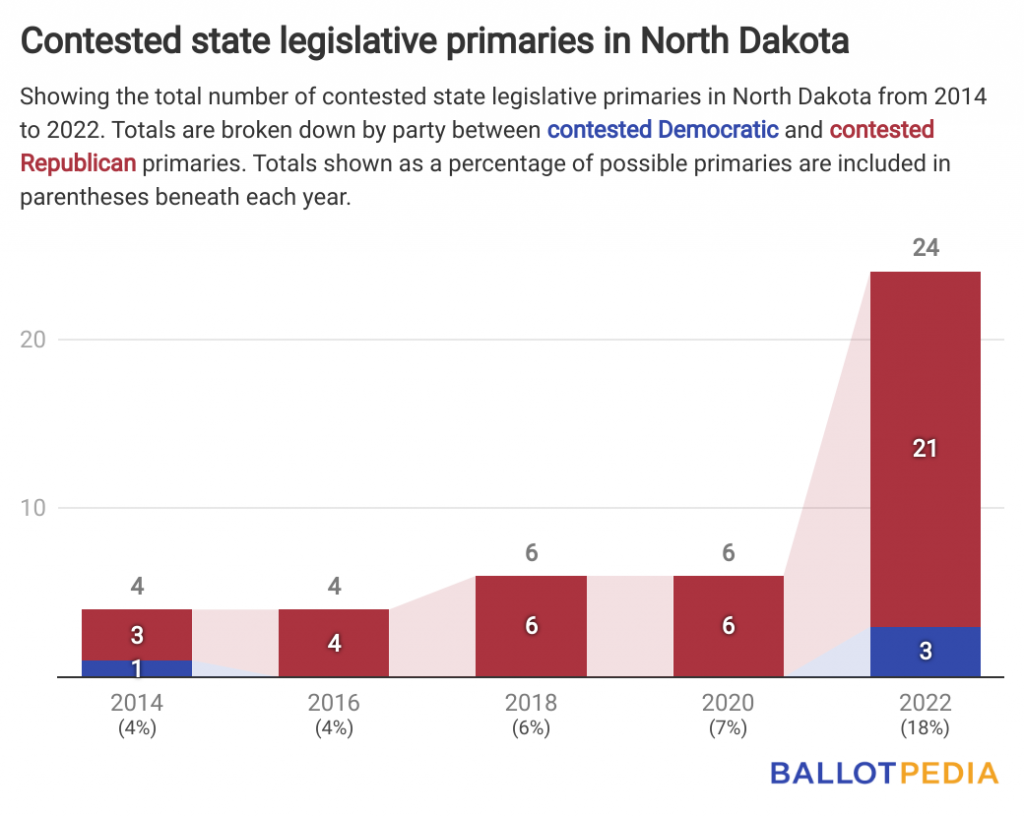From 2014 to 2020, the number of state legislative primaries in North Dakota with more than one candidate ranged from four to six. This year, the number of contested primaries rose to 24, a 300% increase from 2020. This represents 18% of all possible primary contests.

Of those candidates involved in primaries, 27 are incumbents, representing 37% of incumbents seeking re-election, the largest such percentage since 2014. As a result of redistricting, two incumbents—Sens. Robert Fors (R) and Randy Lemm (R)—were drawn into the same district, setting up an incumbent versus incumbent primary.
The filing deadline for candidates running for state or federal office in North Dakota this year was April 11. Candidates filed to run for 66 of the 97 House seats and 32 of the 47 Senate seats.
Twenty-seven of those seats were left open, meaning no incumbents filed to run, the most since 2014. That represents 28% of the seats up for election this year, all of which are guaranteed to be won by newcomers.
Overall, 168 major party candidates filed to run this year: 45 Democrats and 113 Republicans. That’s 1.7 candidates per seat, down from 1.9 in 2020 and 1.8 in 2018.
North Dakota has been a Republican trifecta since Republicans won control of the Senate in 1994. Republicans currently hold a 40-7 majority in the Senate and an 80-14 majority in the House.
North Dakota’s state legislative primaries are scheduled from June 14, making them the 21st in the nation.
Additional reading:
Learn More






